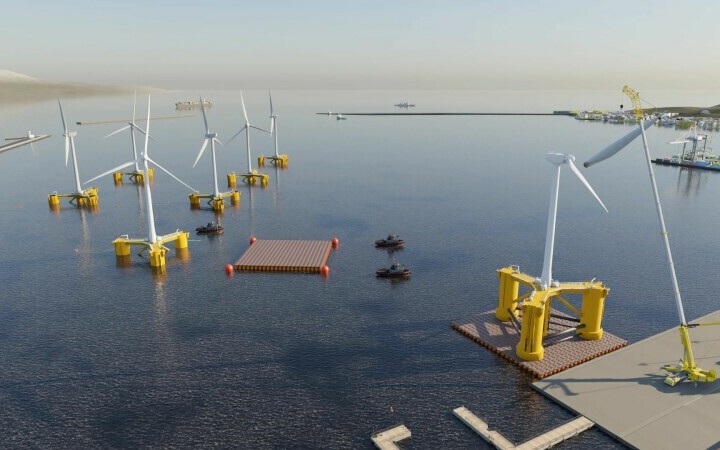The two-pronged offshore energy sector appears to be playing off the real estate adage “location, location, location.”
For now, the oil-rich Gulf of Mexico is in the driver’s seat though prices have not reached the triple digit highs expected this summer because of the OPEC cartel’s April decision to cut production.
The picture is quite different in the Northeast, where the fledgling offshore wind market is sustaining heavy blows from inflation, infrastructure limitations and, more recently, judicial scrutiny. An unworkable cost imbalance has forced the temporary scrapping of at least one developing wind farm, while developers also must face something oil and gas operators have been all too familiar with over the years: lawsuits.
Concerns over energy security and affordability have of late overshadowed transition to offshore wind and other renewable energy sources. To point,
MORE OIL PRODUCTION
To that end, BP on April 13 began flowing first oil from the “digitally advanced” Argos floating production system (FPS), the centerpiece of the $9 billion Mad Dog 2 deepwater Gulf development. It’s estimated that the field will produce up to 140,000 bbl/d from 14 wells in roughly 4,500' of water.
Shell Offshore, which likewise holds a stake in a Northeast offshore wind farm, entered 2023 with the start-up of the Vito FPS in Mississippi Canyon, which at its peak will produce an estimated 100,000 bbls. of oil equivalent (boe/d) from four blocks in 4,000’ of water. Vito serves as the design standard for the Whale production system, which is expected to begin production next year in Alaminos Canyon.
These and other developments are expected to increase Gulf of Mexico oil production by 120,000 barrels per day (bbl/d) this year, according to the U.S. Energy Information Administration (EIA), which reported average 2022 pro- duction in the Gulf of 1.78 million bbl/d.
“The fundamental setup for our industry is arguably the best that it has
Transocean Ltd. had 11 active ultradeepwater drillships at work in the Gulf earlier this year, commanding average day rates of $439,000 and as high as $480,000. Those include the eighth-generation ultradeepwater drillships Deepwater Atlas and Deepwater Titan, which were commissioned in 2022.
Contract rates for the latest generation platform and drilling support vessels (PSV/OSV), likewise, are on the high end, said Richard Sanchez, S&P Global’s senior marine analyst. As vessels complete long-term charters and go on the spot market, 320' PSVs up to 6,000 tons deadweight (dwt) are getting from $30,000 to $55,000/day, he said, with rates for long-term charters ranging from $40,000 to $47,000/day.
Meanwhile, the first Gulf of Mexico oil and gas lease sale in nearly 18 months drew nearly $264 million in high bids on March 29 for 313 blocks covering 1.6 million acres in the Gulf’s Western, Central and Eastern Planning Areas.
The Bureau of Ocean Energy Management (BOEM) also is expected to soon announce the date for the Gulf’s first federal wind lease offering. The precise date for the landmark offshore wind sale was to be set following the 60-day public comment period that ended on April 22.
While the Gulf Coast holds a significant advantage for wind developers, given its extensive oil and gas infrastructure, the region is not invulnerable to the high costs that have hampered Northeast developments. Spiraling inflation rates forced Avangrid Inc. to temporarily abandon the 1,232 MW Commonwealth Wind farm off Massachusetts after state officials declined to renegotiate the original power purchase agreement (PPA). The developer planned to rebid at a subsequent lease sale in hopes of signing a more workable financial agreement.
Also off Massachusetts, Shell New Energies US LLC and Ocean Winds North America have expressed concern over the economic viability of the 1,200-MW SouthCoast Wind Energy project. The partners’ request for more time to evaluate the current “microeconomic and supply chain” situation, was turned down.
Legal challenges by fisheries and other interests have also thrown wrinkles into developers’ plans, specifically targeting 806-MW Vineyard Wind, which nonetheless remains on track to be the nation’s first commercial offshore wind farm this year. Partners Orsted and Eversource Energy likewise are scheduled to begin generating 132 MW of first power this year at the South Fork Wind farm off New York.
Even the Department of Defense has raised concerns, saying in April that the push to build wind farms along the central Atlantic coast could conflict with military operations.




